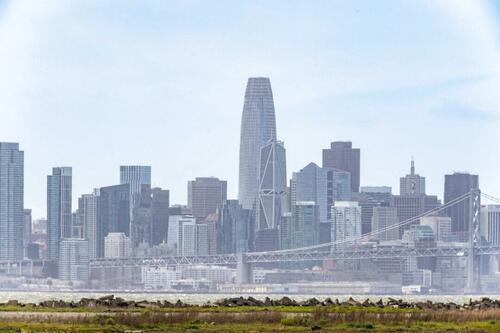
San Francisco Is America’s Worst Run City: WalletHub Report
Authored by Kimberley Hayek via The Epoch Times,
San Francisco is the worst-run city in the nation, according to a report by WalletHub.

Several other California cities also ranked in the bottom 10 of 148 cities, including Stockton (138), Los Angeles (139), Long Beach (140), Fresno (141), and Oakland (146).
The finance website created a “Quality of Services” score of 36 metrics split into six categories, which was then measured against 148 of the nation’s most populated city’s per-capita budget.
San Francisco came in last overall, ranking 89th in financial stability, 137th in education, 102nd in safety, and 135th in economy.
The WalletHub study also looked at the operating efficiency of cities, by comparing the quality of city services residents receive against the city’s budget.
“The best-run cities in America use their budgets most effectively to provide high-quality financial security, education, health, safety and transportation to their residents,” WalletHub analyst Chip Lupo said in the June 17 report.
“Many of the top cities also have a very low amount of outstanding government debt per capita, which can prevent financial troubles in the future.”
San Francisco ranked so low in part due to its long-term debt holdings. Moody’s lowered San Francisco’s credit rating in 2024, citing in part, the high number of commercial vacancies in its downtown, Moody’s said in a statement to Bloomberg News.
It ranked highest in long-term debt outstanding per capita, coming in at 146th, with debt levels 89 times higher than the best city: Casper, Wyoming.
In the report, San Francisco ranked 135th in economy, suggesting that San Francisco’s high per-capita budget isn’t resulting in effective service quality. The city had $2.2 billion in outstanding city general obligation bonds as of June 30, 2024.
The WalletHub study ranked San Francisco last in high school graduation rate at 90.4 percent. By contrast Frederick, Maryland, ranked number one, graduating students in 2024 at a rate of 94.3 percent, a 1 percent increase over the year prior.
Although San Francisco’s roads have improved in recent years, there is still room for improvement. San Francisco’s 2,148.3 total lane miles ranked tied for 126th in quality of roads.
In 2024, San Francisco’s independently rated Pavement Condition Index (PCI) score increased to 75, a rating categorized as “good” by the regional Metropolitan Transportation Commission (MTC). This rating placed San Francisco as having the best roads among large Bay Area cities.
The pavement in the Bay Area, encompassing 44,000 lane miles of local streets and roads, does not receive great ratings overall. The MTC placed the region’s 2023 PCI score at 67 out of a maximum possible 100 points, and is therefore deemed “fair.”
“The good news is that city and county public works teams have been able to prevent large-scale deterioration. We’re even seeing big improvements in some places. The bad news is there’s still so far to go,” MTC chair and Napa County Supervisor Alfredo Pedroza said of the Bay Area’s roads in 2024.
San Francisco scored much higher in two measures: It was second in health, potentially owing to the fact that the city has the lowest infant mortality rate. And it ranked 13th for infrastructure and pollution risk.
The top cities on WalletHub’s list are Provo, Utah; Nampa, Idaho; Manchester, New Hampshire; Boise, Idaho; and Nashua, New Hampshire.
Cost of Living
WalletHub, which creates tools and resources to help consumers manage their finances, acknowledges that cities across the country have been ravaged by high inflation.
According to the Joint Economic Committee (JEC) State Inflation Tracker, the average California household was paying $1,278 more per month for the identical basket of goods and services in December 2024 compared to January 2021. Cumulatively, that amounted to $38,353 in higher spending per household over that time period.
The California weighted average of the consumer price index (CPI) in 1965, came in at 31.7 (using 1982-4 as the reference line at 100); by 2024, it had risen to 341.951.
This has locked local leaders into a delicate balancing act, especially as of late, as they must factor in the significant increase in the cost of goods when deciding where to place budget funds. In San Diego, the city has been weighing cuts in services such as public restrooms, and has already increased the price of parking downtown.
“Leaders must carefully consider which services are most essential, which agencies’ budgets to cut or boost, and whether and how much to raise taxes, among other decisions,” the WalletHub report states.
Tyler Durden
Mon, 06/23/2025 – 20:55

 5 miesięcy temu
5 miesięcy temu












